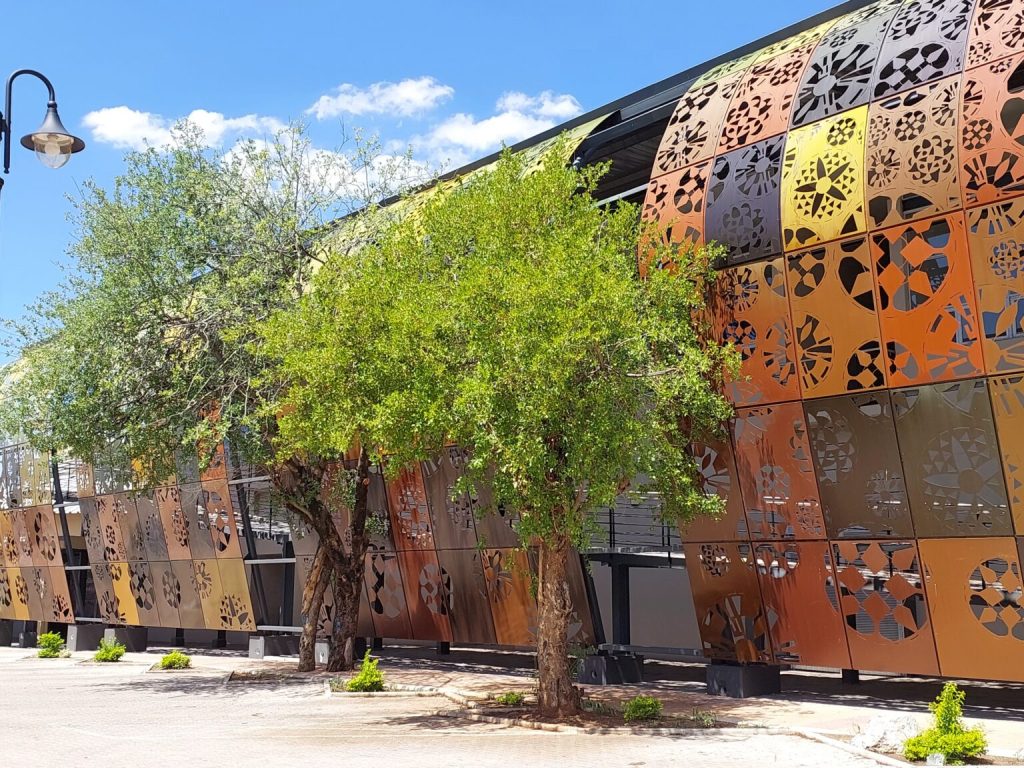The Botswana National Museum, located in the heart of Gaborone, is a vital institution dedicated to preserving and showcasing the country’s rich cultural and natural heritage. Established in 1967 and officially opened to the public in 1968, the museum has become an important center for education, research, and the promotion of Botswana’s diverse history and traditions.
A Hub of Art, History, and Nature
The National Art Gallery and Octagon Gallery
One of the highlights of the museum is its National Art Gallery, which serves as a platform for local artists to showcase their talents. Visitors can explore a variety of paintings, sculptures, and traditional crafts, many of which reflect Botswana’s cultural identity, history, and storytelling traditions. Adjacent to this is the Octagon Gallery, an exhibition space where temporary displays, traveling exhibits, and special events are hosted throughout the year.
The National Botanical Garden
In 2007, the museum expanded its scope by opening the National Botanical Garden, which features a wide variety of indigenous plant species. The garden aims to educate visitors about Botswana’s unique flora and ecological conservation efforts, making it a peaceful and informative stop for nature lovers.
Cultural Significance and Historic Preservation
Managing Botswana’s First UNESCO World Heritage Site
The Botswana National Museum plays a major role in the preservation of Tsodilo, Botswana’s first UNESCO World Heritage Site. Known as the “Louvre of the Desert,” Tsodilo Hills is home to over 4,500 rock paintings, dating back thousands of years, making it one of the most significant archaeological and historical sites in Africa. The museum is actively involved in research and conservation efforts to protect this invaluable piece of human history.
Tsholofelo Park and the Story of El Negro
Another key historical site managed by the museum is Tsholofelo Park, which serves as the final resting place of El Negro, a Tswana man whose remains were taken to Spain in the 19th century and put on display in a museum. After international pressure and negotiations, his remains were repatriated to Botswana in 2000 and buried with dignity. The site now stands as a symbol of cultural identity, repatriation, and human rights.
Educational and Community Initiatives
The Botswana National Museum is not just a place for exhibitions—it is a hub for educational programs, research, and community engagement. The museum regularly collaborates with local schools, universities, and cultural institutionsto promote awareness about Botswana’s history, indigenous knowledge, and environmental conservation. Through workshops, guided tours, and heritage projects, it continues to inspire both locals and international visitors.
Why Visit the Botswana National Museum?
Whether you are a history enthusiast, art lover, researcher, or simply curious about Botswana’s past, the Botswana National Museum offers a captivating experience. Visitors can:
✅ Explore traditional artifacts and crafts showcasing Botswana’s heritage.
✅ Admire local and contemporary art in the National Art Gallery.
✅ Walk through the National Botanical Garden to learn about indigenous plant life.
✅ Learn about Tsodilo Hills and its ancient rock paintings.
✅ Visit Tsholofelo Park and understand the historical significance of repatriation.
✅ Take part in educational programs and guided tours to deepen their knowledge of Botswana’s culture.
The museum remains an important guardian of the nation’s identity and a must-visit destination for anyone wanting to understand Botswana’s history, art, and natural beauty.








